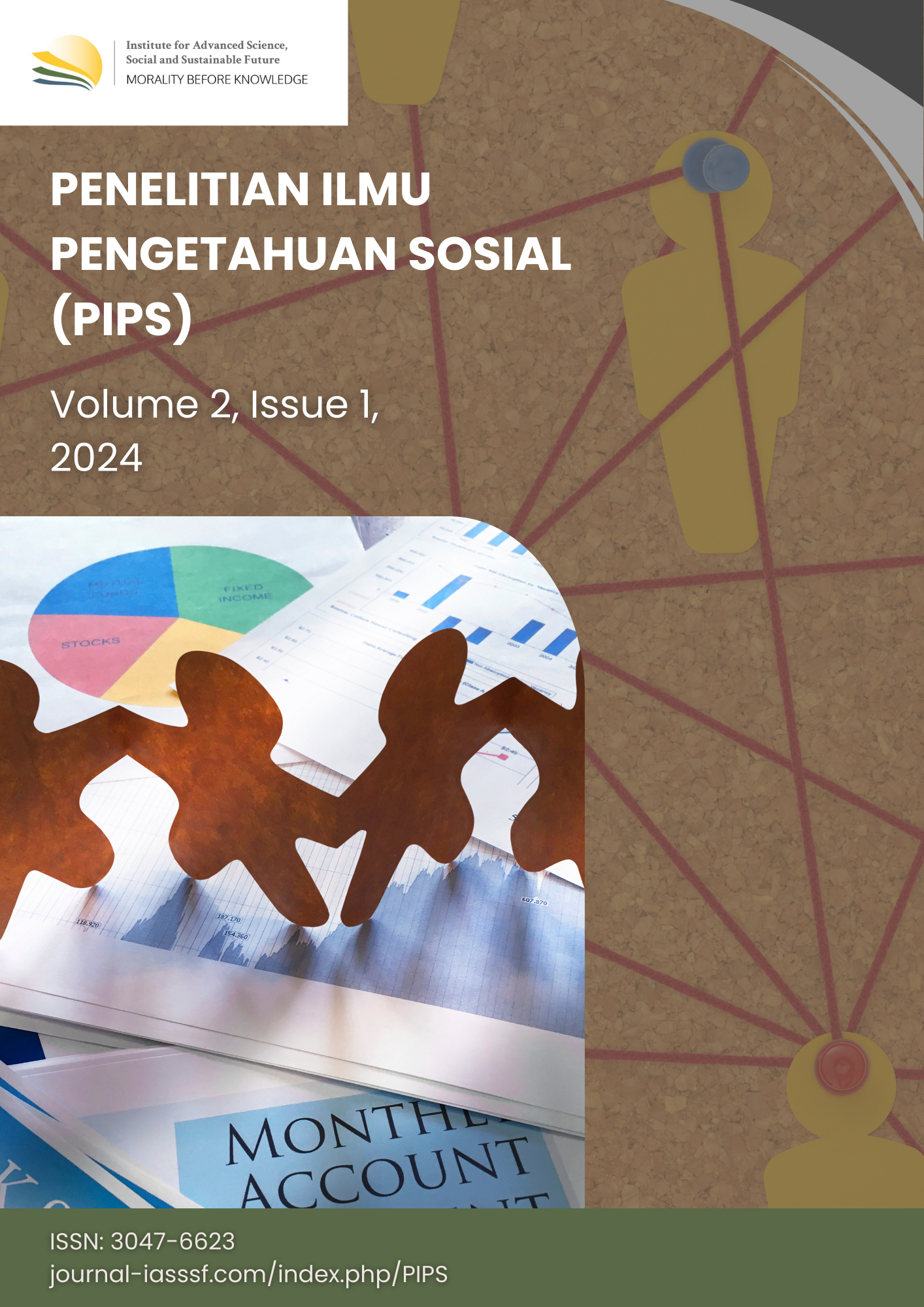The impact of parental divorce on children's primary and secondary education attainment levels
DOI:
https://doi.org/10.61511/pips.v2i1.2025.1727Keywords:
divorce, school attainment, children's sex, time of divorceAbstract
Background: Divorce is a significant life event that can have profound effects on children, particularly in their educational attainment. Previous research suggests that parental divorce can lead to various negative consequences, including psychological distress, social instability, and economic challenges. However, there is limited empirical evidence examining the impact of parental divorce on children's educational attainment in Indonesia. Methods: This study utilizes data from the Indonesian Family Life Survey (IFLS) waves 3, 4, and 5 to examine the educational outcomes of children with divorced parents compared to those with married parents. The analysis explores the relationship between parental divorce and children's educational attainment while considering potential influencing factors such as maternal characteristics and the possibility of reverse causality. Findings: The study found that children from divorced families generally had lower educational attainment than those from intact families. However, children whose parents were currently divorced had better educational outcomes than children whose parents remained married. This paradoxical finding suggests the influence of factors such as maternal education and potential reverse causality. Additionally, the study found that the age at which divorce occurs plays a crucial role divorce at an early age has a more negative impact on educational attainment due to children's higher dependency on parents and limited coping mechanisms. However, no significant differences were found between boys and girls in terms of educational outcomes after divorce. Conclusions: Parental divorce negatively impacts children's educational attainment, primarily due to economic hardship, changes in parenting roles, and psychological distress. However, some children from currently divorced families show better educational outcomes, possibly due to maternal characteristics and other mediating factors. Novelty/Originality of this Article: This study contributes to the existing literature by providing empirical evidence on the impact of parental divorce on children's educational attainment in Indonesia, a context with limited prior research.
References
Aassve, A., Betti, G., Mazzuco, S., & Mencarini, L. (2007). Marital disruption and economic well-being: A comparative analysis. Journal of the Royal Statistical Society Series A: Statistics in Society, 170(3), 781-799. https://doi.org/10.1111/j.1467-985X.2007.00483.x
Amato, P. R., & Anthony, C. J. (2014). Estimating the effects of parental divorce and death with fixed effects models. Journal of marriage and family, 76(2), 370-386. https://doi.org/10.1111/jomf.12100
Amato, P. R., & Keith, B. (1991). Parental divorce and the well-being of children: a meta-analysis. Psychological bulletin, 110(1), 26-46. https://doi.org/10.1037//0033-2909.110.1.26
Ananat, E. O., & Michaels, G. (2008). The effect of marital breakup on the income distribution of women with children. Journal of Human Resources, 43(3), 611-629. https://doi.org/10.3368/jhr.43.3.611
Arkes, J. (2015). The temporal effects of divorces and separations on children’s academic achievement and problem behavior. Journal of divorce & remarriage, 56(1), 25-42. https://doi.org/10.1080/10502556.2014.972204
Baxter, J., Weston, R., & Qu, L. (2011). Family structure, co-parental relationship quality, post-separation paternal involvement and children’s emotional wellbeing. Journal of Family Studies, 17(2), 86-109. https://doi.org/10.5172/jfs.2011.17.2.86
Becker, G. S., & Tomes, N. (1986). Human capital and the rise and fall of families. Journal of labor economics, 4(3, Part 2), S1-S39. https://doi.org/10.1086/298118
Biblarz, T. J., & Raftery, A. E. (1999). Family structure, educational attainment, and socioeconomic success: Rethinking the" pathology of matriarchy". American Journal of Sociology, 105(2), 321-365. https://doi.org/10.1086/210314
Bloome, D. (2017). Childhood family structure and intergenerational income mobility in the United States. Demography, 54(2), 541-569. https://doi.org/10.1007/s13524-017-0564-4
Bracke, P. F., Colman, E., Symoens, S. A., & Van Praag, L. (2010). Divorce, divorce rates, and professional care seeking for mental health problems in Europe: a cross-sectional population-based study. BMC Public Health, 10, 1-12. https://doi.org/10.1186/1471-2458-10- 224
Bramlett, M. D., & Blumberg, S. J. (2007). Family structure and children’s physical and mental health. Health affairs, 26(2), 549-558. https://doi.org/10.1377/hlthaff.26.2.549
Brand, J. E., Moore, R., Song, X., & Xie, Y. (2019). Why does parental divorce lower children's educational attainment? A causal mediation analysis. Sociological science. https://doi.org/10.15195/V6.A11
Cammack, M., & Heaton, T. B. (2017). Explaining the Recent Upturn in Divorce in Indonesia: Developmental Idealism and the Effect of Political Change. Asian Journal of Social Science, 39(6), 776-796. https://doi.org/10.2139/ssrn.2988407
De Vaus, D., Gray, M., Qu, L., & Stanton, D. (2017). The economic consequences of divorce in six OECD countries. Australian Journal of Social Issues, 52(2), 180-199. https://doi.org/10.1002/ajs4.13
Demuth, S., & Brown, S. L. (2004). Family structure, family processes, and adolescent delinquency: The significance of parental absence versus parental gender. Journal of research in crime and delinquency, 41(1), 58-81. https://doi.org/10.1177/0022427803256236
Dewilde, C. (2008). Divorce and the housing movements of owner-occupiers: A European comparison. Housing Studies, 23(6), 809-832. https://doi.org/10.1080/02673030802423151
Folke, O., & Rickne, J. (2020). All the single ladies: Job promotions and the durability of marriage. American Economic Journal: Applied Economics, 12(1), 260-287. https://doi.org/10.1257/app.20180435
Goldberg, W. A., Greenberger, E., Hamill, S., & O'neil, R. O. B. I. N. (1992). Role demands in the lives of employed single mothers with preschoolers. Journal of family issues, 13(3), 312-333. https://doi.org/10.1177/019251392013003004
Gujarati, D. (2011). Econometrics by Example. Social Indicators Research. https://doi.org/10.1007/s11205-010-9703-7
Handalusia, H. V., Chaikal, N., & Gerald, M. N. W. (2018). Partners not for life? on the determinants of marriage dissolution in Indonesia. In E3S Web of Conferences (Vol. 74, p. 10019). EDP Sciences. https://doi.org/10.1051/e3sconf/20187410019
Heaton, T. B., Cammack, M., & Young, L. (2001). Why is the divorce rate declining in Indonesia?. Journal of Marriage and Family, 63(2), 480-490. https://doi.org/10.1111/j.1741-3737.2001.00480.x
Himawan, K. K., Bambling, M., & Edirippulige, S. (2018). What does it mean to be single in Indonesia? Religiosity, social stigma, and marital status among never-married Indonesian adults. Sage Open, 8(3), 2158244018803132. https://doi.org/10.1177/2158244018803132
Howell, S. H., Portes, P. R., & Brown, J. H. (1997). Gender and age differences in child adjustment to parental separation. Journal of Divorce & Remarriage, 27(3-4), 141-158. https://doi.org/10.1300/J087v27n03_09
Ispa, J. M., Fine, M. A., Halgunseth, L. C., Harper, S., Robinson, J., Boyce, L., ... & Brady‐Smith, C. (2004). Maternal intrusiveness, maternal warmth, and mother–toddler relationship outcomes: Variations across low‐income ethnic and acculturation groups. Child development, 75(6), 1613-1631. https://doi.org/10.1111/j.1467-8624.2004.00806.x
Kesselring, R. G., & Bremmer, D. (2006). Female income and the divorce decision: Evidence from micro data. Applied Economics, 38(14), 1605-1616. https://doi.org/10.1080/00036840500426934
Killewald, A. (2016). Money, work, and marital stability: Assessing change in the gendered determinants of divorce. American Sociological Review, 81(4), 696-719. https://doi.org/10.1177/0003122416655340
Lamb, M. E., Pleck, J. H., Charnov, E. L., & Levine, J. A. (2017). A biosocial perspective on paternal behavior and involvement. In Parenting across the life span (pp. 111-142). Routledge. https://doi.org/10.4324/9781315126005-7
Leopold, T. (2018). Gender differences in the consequences of divorce: A study of multiple outcomes. Demography, 55(3), 769-797. https://doi.org/10.1007/s13524-018-0667-6
Li, Z., & Qiu, Z. (2018). How does family background affect children’s educational achievement? Evidence from Contemporary China. The Journal of Chinese Sociology, 5(1), 1-21. https://doi.org/10.1186/s40711-018-0083-8
Marks, N. F., & McLanahan, S. S. (1993). Gender, family structure, and social support among parents. Journal of marriage and family, 55(2), 481. https://doi.org/10.2307/352817
Pagani, L., Boulerice, B., Tremblay, R. E., & Vitaro, F. (1997). Behavioural development in children of divorce and remarriage. Journal of Child Psychology and Psychiatry, 38(7), 769-781. https://doi.org/10.1111/j.1469-7610.1997.tb01595.x
Ribar, D. C. (2015). Why marriage matters for child wellbeing. The Future of Children, 11-27. https://doi.org/10.1353/foc.2015.0010
Ryan, R. M., Kalil, A., & Ziol‐Guest, K. M. (2008). Longitudinal patterns of nonresident fathers’ involvement: The role of resources and relations. Journal of Marriage and Family, 70(4), 962-977. https://doi.org/10.1111/j.1741-3737.2008.00539.x
Smock, P. J. (1994). Gender and the short-run economic consequences of marital disruption. Social forces, 73(1), 243-262. https://doi.org/10.1093/sf/73.1.243
Smock, P. J., Manning, W. D., & Gupta, S. (1999). The effect of marriage and divorce on women's economic well-being. American Sociological Review, 64(6), 794-812. https://doi.org/10.2307/2657403
Sobolewski, J. M., & King, V. (2005). The importance of the coparental relationship for nonresident fathers’ ties to children. Journal of Marriage and Family, 67(5), 1196-1212. https://doi.org/10.1111/j.1741-3737.2005.00210.x
Stock, L., Acquah, D., Molloy, D., & Piergallini, I. (2017). Inter-Parental Relationships, Conflict And The Impacts Of Poverty. London: Early Intervention Foundation.
Tartari, M. (2015). Divorce and the cognitive achievement of children. International Economic Review, 56(2), 597-645. https://doi.org/10.1111/iere.12116
Thomson, E., McLanahan, S. S., & Curtin, R. B. (1992). Family structure, gender, and parental socialization. Journal of Marriage and the Family, 368-378. https://doi.org/10.2307/353068
Williams, R. (2012). Using the margins command to estimate and interpret adjusted predictions and marginal effects. The Stata Journal, 12(2), 308-331. https://doi.org/10.1177/1536867x1201200209
Yuan, A. S. V. (2016). Father–child relationships and nonresident fathers’ psychological distress: What helps and what hurts?. Journal of Family Issues, 37(5), 603-621. https://doi.org/10.1177/0192513X14526394
Downloads
Published
How to Cite
Issue
Section
License
Copyright (c) 2025 Ni Putu Cyntia Suryadewi

This work is licensed under a Creative Commons Attribution 4.0 International License.














